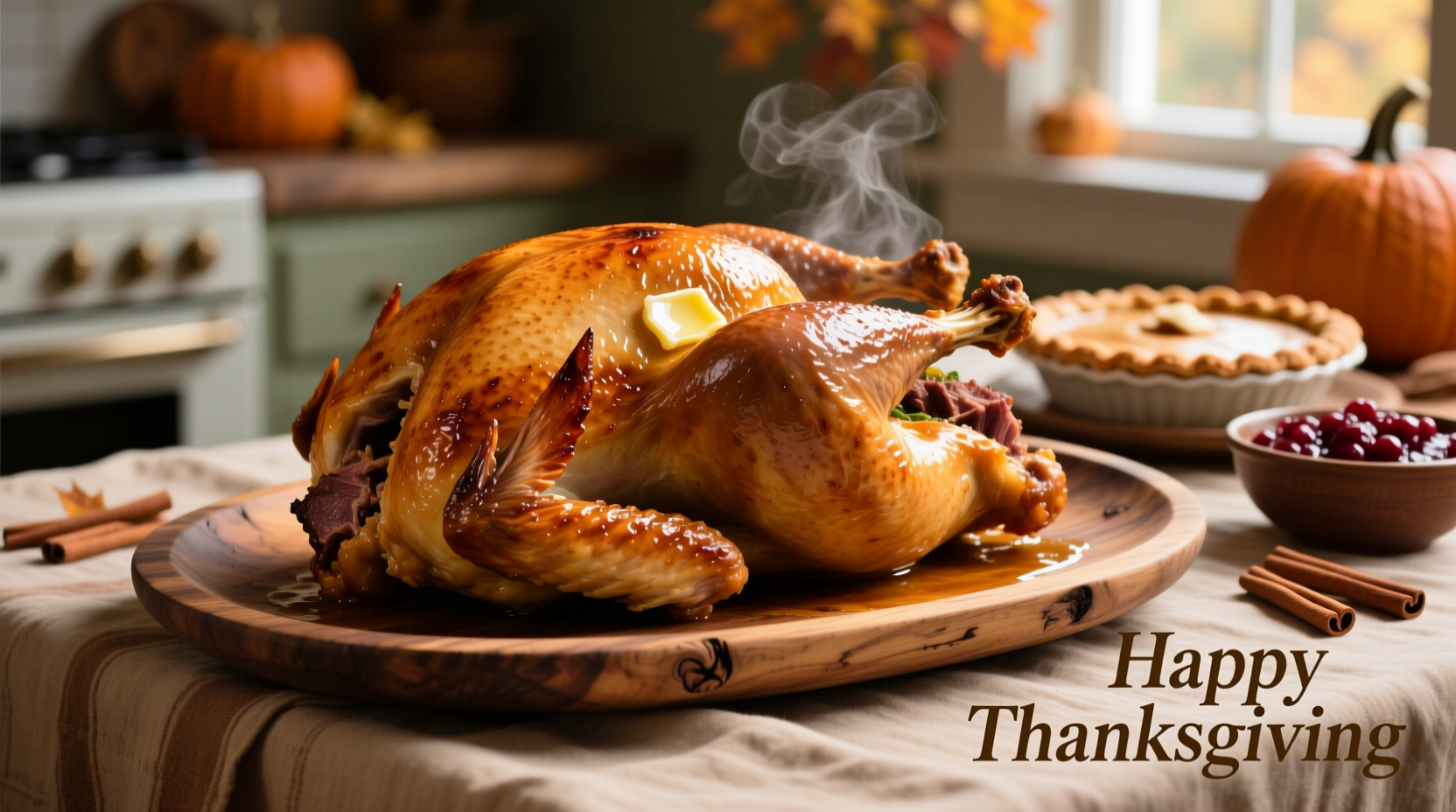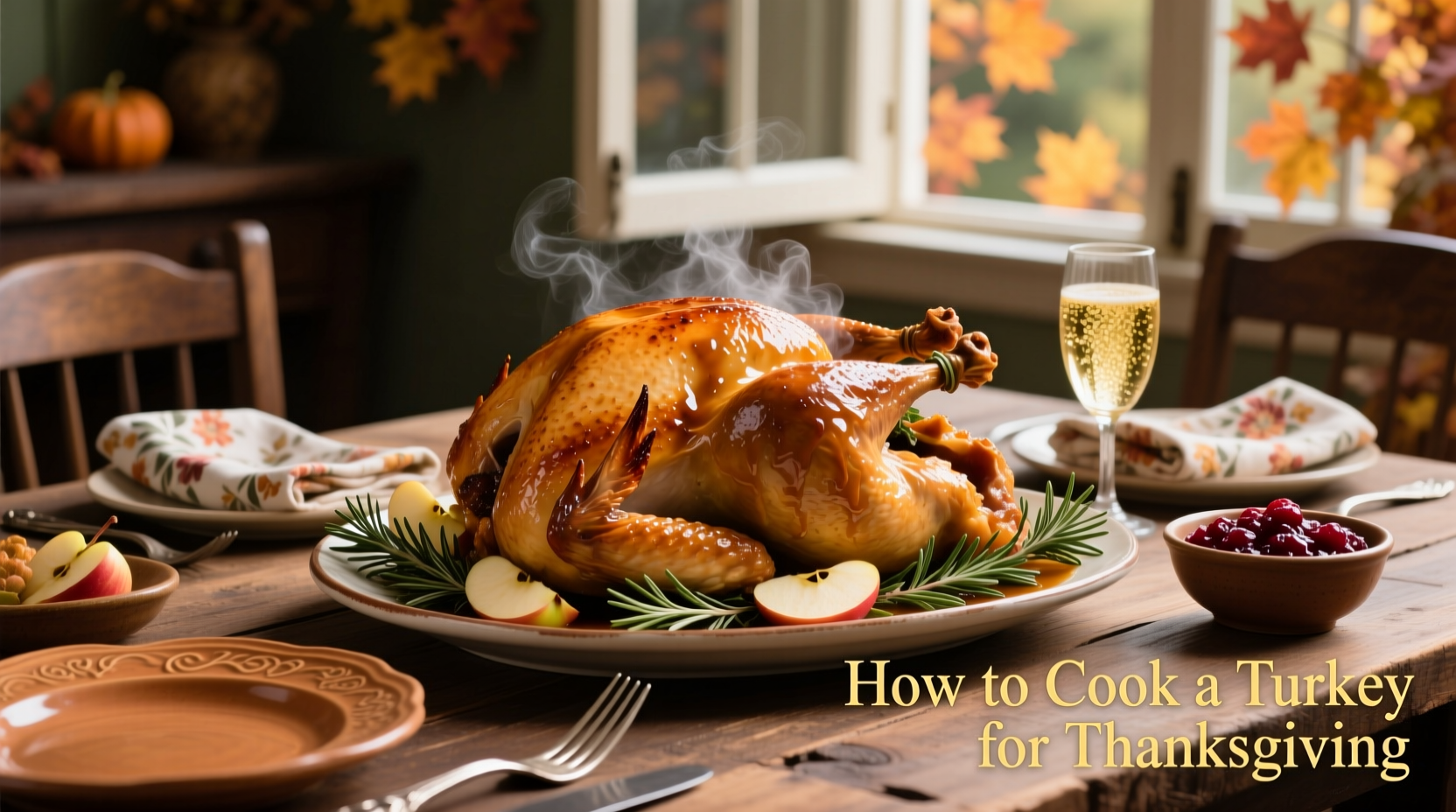Perfectly cook a Thanksgiving turkey by thawing it properly (24 hours per 4-5 pounds in refrigerator), seasoning generously, roasting at 325°F until internal temperature reaches 165°F in thickest parts, and resting 30-45 minutes before carving. This comprehensive guide provides exact timing, foolproof techniques, and professional tips for moist, flavorful results every time.
Nothing defines Thanksgiving quite like a beautifully roasted turkey. Yet each year, countless home cooks face dry meat, uneven cooking, or food safety concerns. The good news? Achieving that perfect golden-brown bird with juicy white meat and richly flavored dark meat is entirely within your reach. This guide distills professional kitchen techniques into straightforward steps anyone can follow, eliminating guesswork and ensuring your centerpiece shines.
Planning Your Perfect Thanksgiving Turkey
Selecting the right turkey sets the foundation for success. For standard oven roasting, plan for 1¢–1.5 pounds per guest to accommodate both meat lovers and those preferring smaller portions. The National Turkey Federation recommends allowing extra time if you're serving numerous side dishes. Fresh turkeys offer convenience but require purchase within 1-2 days of cooking. Frozen birds need proper thawing time—a critical food safety step many overlook.
| Thawing Method | Time Required | Important Notes |
|---|---|---|
| Refrigerator (most recommended) | 24 hours per 4-5 pounds | Keep at 40°F or below; place on tray to catch drips |
| Cold Water Bath | 30 minutes per pound | Change water every 30 minutes; cook immediately after thawing |
| Never Thaw At Room Temperature | N/A | Risk of bacterial growth in "danger zone" (40°F–140°F) |
According to USDA Food Safety and Inspection Service guidelines, improper thawing ranks among the top food safety mistakes during holiday cooking. When thawing in refrigerator, allow an additional day for turkeys over 15 pounds. A partially frozen turkey won't cook evenly, resulting in overcooked exterior and undercooked interior.
Preparation Techniques That Make All the Difference
Professional kitchens achieve consistently moist turkey through proper preparation—not just cooking. Start by removing the neck and giblets (check both front and back cavities). Pat the entire surface completely dry with paper towels; moisture prevents proper browning. For enhanced flavor and moisture retention, consider a simple brine.
A basic brine solution follows the James Beard Foundation's recommended ratio: 1 cup kosher salt and 1¢ cup sugar per gallon of cold water. Submerge the turkey completely and refrigerate for 12-24 hours (no longer, as excessive brining makes meat spongy). For those short on time, a dry brine works remarkably well—rub 1 tablespoon kosher salt per 5 pounds of turkey under the skin and on the surface, then refrigerate uncovered for 1-3 days.

The Roasting Process: Temperature Control is Key
Preheat your oven to 325°F—the ideal temperature for even cooking without excessive drying. Position the turkey breast-side up on a rack in a roasting pan. Tuck the wing tips under the body to prevent burning. For extra protection, cover the breast loosely with foil during the first two-thirds of cooking time.
Roasting time varies based on size and oven accuracy. The University of Minnesota Extension provides these reliable guidelines:
- 8-12 pounds: 2¢–3 hours
- 12-14 pounds: 3–3¢– hours
- 14-18 pounds: 3¢––4¢– hours
- 18-20 pounds: 4¢––4¢– hours
- 20-24 pounds: 4¢––5 hours
Insert an oven-safe meat thermometer into the thickest part of the thigh, avoiding bone. Baste every 45-60 minutes with pan juices or melted butter for added moisture and flavor. About 30 minutes before estimated finish time, remove any foil covering to allow proper browning.
Checking Doneness: Beyond the Pop-Up Thermometer
While convenient, pop-up thermometers often trigger too early, resulting in undercooked turkey. The USDA Food Safety and Inspection Service mandates a minimum internal temperature of 165°F in all parts for safety. Check multiple locations:
- Thickest part of breast: 165°F
- Innermost part of thigh: 165°F
- Innermost part of wing: 165°F
If your turkey reaches proper temperature but hasn't achieved desired browning, increase oven temperature to 425°F for the final 10-15 minutes. Remember that temperature will continue rising 5-10 degrees during resting—this carryover cooking is why removing the turkey at 160°F often yields perfect 165°F results.
Resting and Carving: The Final Crucial Steps
Rushing to carve sacrifices precious juices. Allow your turkey to rest, tented loosely with foil, for 30-45 minutes (longer for larger birds). This critical step lets proteins relax and juices redistribute throughout the meat. During this time, prepare your gravy using the flavorful pan drippings.
When carving, start with the legs and wings, then slice the breast meat against the grain. The American Egg Board recommends using a sharp carving knife and steady pressure for clean slices. Serve white and dark meat separately, as many guests have distinct preferences.
Troubleshooting Common Turkey Problems
Even with careful planning, issues can arise. If your turkey is browning too quickly, reduce oven temperature by 25°F and cover loosely with foil. For a turkey that's cooking too slowly, increase temperature by 25°F but monitor closely to prevent drying. If you discover your turkey is undercooked during carving, return slices to a 300°F oven until safe temperature is reached.
Frequently Asked Questions
How long should I let my turkey rest before carving?
Allow your turkey to rest for 30-45 minutes after removing from the oven. This crucial step lets the proteins relax and juices redistribute throughout the meat. Carving too soon releases precious juices onto the cutting board rather than staying in the meat. Larger turkeys (over 18 pounds) may benefit from up to 60 minutes of resting time.
What's the best way to check if my turkey is done cooking?
The most reliable method is using an instant-read thermometer to verify internal temperature reaches 165°F in multiple locations: the thickest part of the breast, the innermost part of the thigh, and the innermost part of the wing. Insert the thermometer into the meat, avoiding bone. While pop-up thermometers are convenient, they often trigger too early, resulting in undercooked turkey.
Can I cook my turkey the day before Thanksgiving?
Yes, cooking your turkey one day ahead can reduce Thanksgiving day stress. After cooking, let it cool completely, then carve the meat off the bone. Store in airtight containers in the refrigerator. Reheat gently in the oven at 300°F with broth to maintain moisture. The University of Minnesota Extension confirms this method often yields juicier results than same-day cooking, as the meat has time to reabsorb juices.
How do I prevent my turkey breast from drying out?
Several techniques help maintain breast moisture: dry brine the turkey 1-3 days ahead, cover the breast loosely with foil during the first two-thirds of cooking, and consider cooking the turkey breast-side down for the first hour before flipping. Most importantly, don't overcook—remove when the breast reaches 160°F, as carryover cooking will bring it to the safe 165°F. Resting for at least 30 minutes before carving is essential for juicy results.











 浙公网安备
33010002000092号
浙公网安备
33010002000092号 浙B2-20120091-4
浙B2-20120091-4